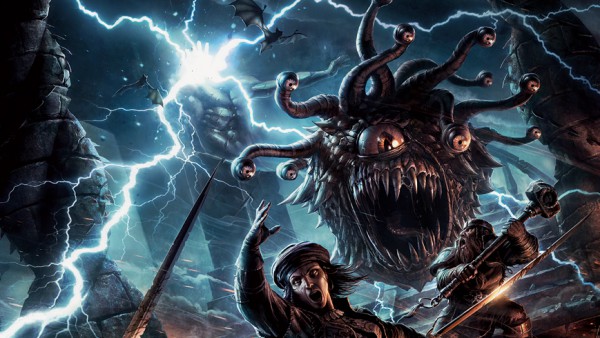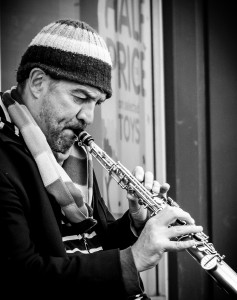 I think I’m improving at the whole photography lark. I mean clearly, I still have a very long way to go before I can consider myself ‘good’, but I’m certainly better than I was a year ago. Ironically, a lot of the photographs I’ve taken in the last year are worse, to my eye, than those I took in previous years with the bridge camera and the little point and click. There’s a reason for that, in fact, there’s probably two reasons.
I think I’m improving at the whole photography lark. I mean clearly, I still have a very long way to go before I can consider myself ‘good’, but I’m certainly better than I was a year ago. Ironically, a lot of the photographs I’ve taken in the last year are worse, to my eye, than those I took in previous years with the bridge camera and the little point and click. There’s a reason for that, in fact, there’s probably two reasons.
Firstly, I’m taking photographs in situations where I wouldn’t normally take them, and I need to learn how to do that successfully. For example, walking around a city centre trying to take pictures of people. I never really did that with any previous camera and so the first few (hundred thousand) times the pictures turn out a bit shit. Secondly, I’m in control of much more of the picture now – and that means I fuck it up more often.
With the bridge, it was a pretty decent camera, and I shot most (all?) of the time in what was referred to as Program AE. That mode automatically picks an aperture and shutter speed that will correctly expose the image. I never even looked at shutter speed and aperture on the bridge, I just let the camera pick them (and ISO, I’m not even sure it ever showed me what the ISO was on any particular shot).
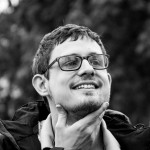 The result is that I spent more time thinking about composure and making sure I was focussed in the right place, and less time wondering if I had the ‘right’ aperture, shutter speed, ISO, etc. So I’m having to train myself to think of those things, and change them when necessary, and that means sometimes I don’t and the shot is crap, or I think about them too much and miss the shot I wanted.
The result is that I spent more time thinking about composure and making sure I was focussed in the right place, and less time wondering if I had the ‘right’ aperture, shutter speed, ISO, etc. So I’m having to train myself to think of those things, and change them when necessary, and that means sometimes I don’t and the shot is crap, or I think about them too much and miss the shot I wanted.
However, when I get everything lined up, composition, aperture, shutter speed, ISO, hand-shake, focus, the shots are better than I could have ever gotten out of the bridge or the point and click – so while some of my output is worse, when it works, it’s significantly better, and I’m really proud of some shots as actual pieces of photographic art.
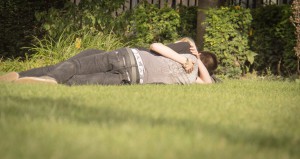 I’m also getting to grips with Lightroom and RAW post-processing, something which was super daunting at the outset, and also lead to a number of ‘it’s worse than I used to do’ moments. Image processing, even in the bridge camera, was pretty good, so the JPG output was pretty good (low sensor size and pixel count not withstanding). Certainly, the 600D’s JPG process is pretty excellent, and for the first few weeks of shooting in RAW and JPG, it was really hard work to make myself process the RAWs because the JPGs were so good.
I’m also getting to grips with Lightroom and RAW post-processing, something which was super daunting at the outset, and also lead to a number of ‘it’s worse than I used to do’ moments. Image processing, even in the bridge camera, was pretty good, so the JPG output was pretty good (low sensor size and pixel count not withstanding). Certainly, the 600D’s JPG process is pretty excellent, and for the first few weeks of shooting in RAW and JPG, it was really hard work to make myself process the RAWs because the JPGs were so good.
The best thing I ever did was give up JPG totally, because that crutch was stopping me from learning to do the processing myself. Now that I’m confident about getting an acceptable basic image, being able to fine tune it for artistic and aesthetic purposes is a really exciting part of the process for me.
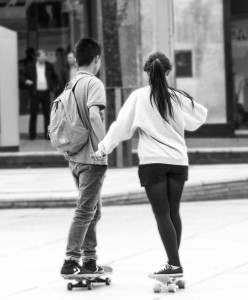 One of the most frustrating issues for me early on, was low light situations. I don’t mean ‘night time’, I mean days without bright sunshine. You don’t realise how much compensating bridge cameras or point and clicks are doing, and how much they’re slowing the shutter speed down in order to get enough light into those shots. So for a long time, I was shooting in low light conditions with shutter speeds which were far too slow, and getting very blurry shots even with expensive lenses. That was very off-putting. In combination with that, I’d been ‘pixel peeking’ images a lot.
One of the most frustrating issues for me early on, was low light situations. I don’t mean ‘night time’, I mean days without bright sunshine. You don’t realise how much compensating bridge cameras or point and clicks are doing, and how much they’re slowing the shutter speed down in order to get enough light into those shots. So for a long time, I was shooting in low light conditions with shutter speeds which were far too slow, and getting very blurry shots even with expensive lenses. That was very off-putting. In combination with that, I’d been ‘pixel peeking’ images a lot.
Pixel peeking is basically blowing an image up to a size on your monitor no one would ever actually view the image at (say, 100%), and then deciding how blurry or how much noise there was based on a really exaggerated section. In the real world, people are likely going to be looking at JPG’s, at their monitor’s native resolution which pretty much makes lots of images look better than they do at 100%.
When I was shooting in low light and using high ISO’s, I was distressed at the amount of noise in the images when looking at them blown up to 100%. At regular sizes, they looked fine, but I couldn’t get over the 100% view. So I avoided shooting with high ISOs, but that meant long shutter speeds, and that meant blurry shots which also looked terrible at 100%, and not as good at regular viewing sizes.
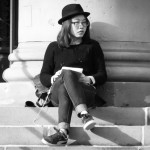 It was a throw-away line in a magazine I was reading which saved me from this. A reader had written in to a photography advice column, and asked which setting was more important, aperture or shutter speed. The query was aimed more at an artistic point of view I think. Anyway, the staff writer who answered the question basically said that aperture (which affects depth of field, as well as the exposure) never ruined a photo ((clearly you could debate this, but in general, I get what he was saying)), but a too-slow shutter speed was a definite cause of rubbish shots. In essence, shutter speed matters more than aperture if you want ‘acceptable’ images. They might not have the artistic aesthetic you were aiming for, but they’ll have sharp edges.
It was a throw-away line in a magazine I was reading which saved me from this. A reader had written in to a photography advice column, and asked which setting was more important, aperture or shutter speed. The query was aimed more at an artistic point of view I think. Anyway, the staff writer who answered the question basically said that aperture (which affects depth of field, as well as the exposure) never ruined a photo ((clearly you could debate this, but in general, I get what he was saying)), but a too-slow shutter speed was a definite cause of rubbish shots. In essence, shutter speed matters more than aperture if you want ‘acceptable’ images. They might not have the artistic aesthetic you were aiming for, but they’ll have sharp edges.
Despite this being obvious advice, it really resonated with me, and a few days later while I was out shooting some street photography in Sheffield, I used ISO’s of up to 1600 to ensure I was getting shutter speeds faster than the rule of thumb required for the focal lengths I was using. When I got back, I was really pleased to see that most of the shots were sharp. Sure, blowing them up to 100% showed a lot of noise, but using noise reduction in Lightroom and viewing them at regular sizes, especially as JPGs, hid all that noise, or at least reduced it to the point where it’s a part of the image, not ruining it.
That gives me the chance to get out in a much broader range of situations and take pictures and that can only be a good thing. Obviously, there’ll be times when even ISO 1600 or 3200 won’t be enough to cope with the light at shutter speeds I’m comfortable at, so I still need to practice holding the camera and not shaking as much, but generally, I’m feeling much more confident after the last few days.
So I’m still thinking about the shots, and I’m still getting the wrong combination of settings at times, or missing the moment, or over-reaching, but I’m enjoying it and I’m learning so much. It’s a lot of fun!


